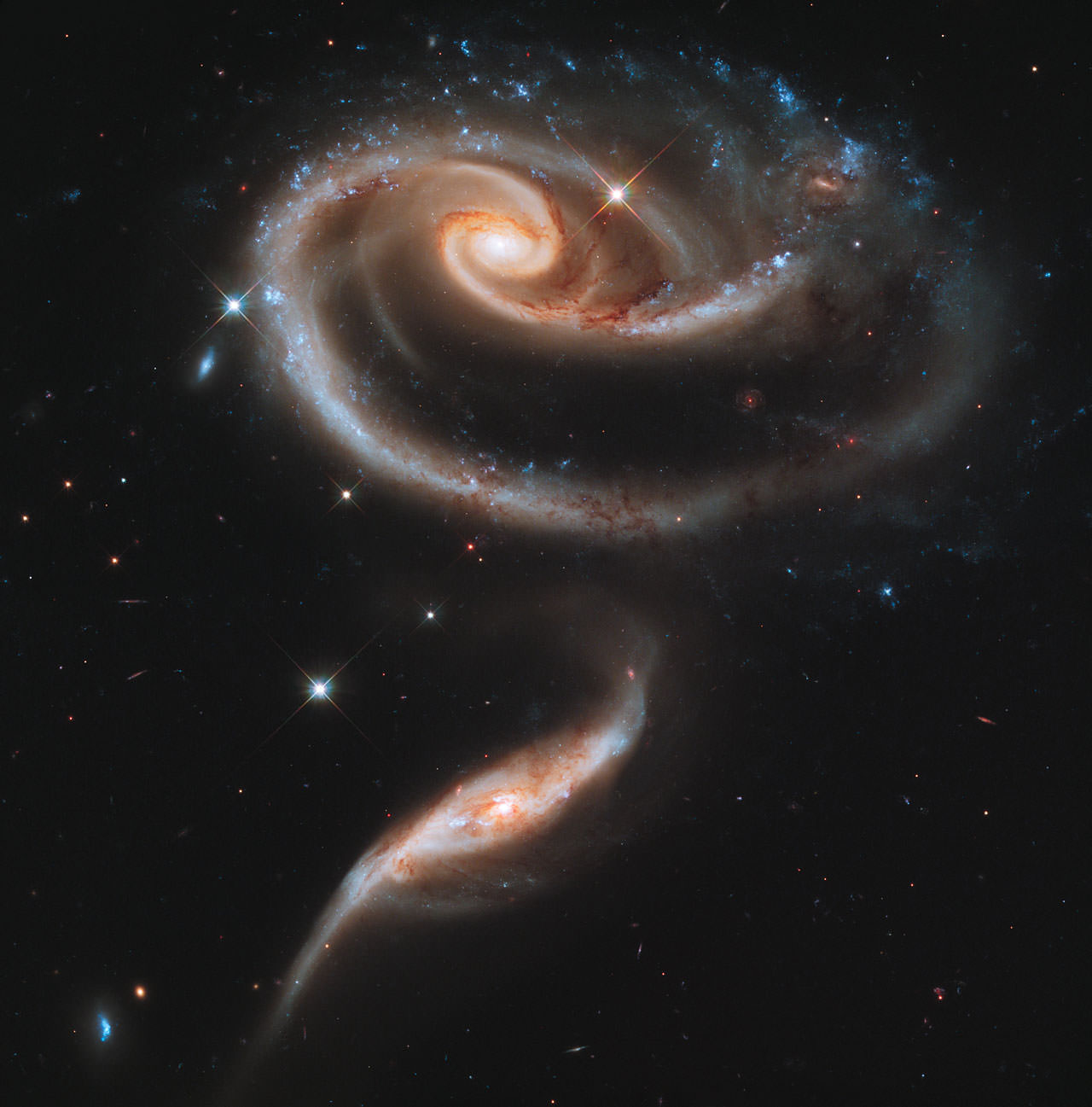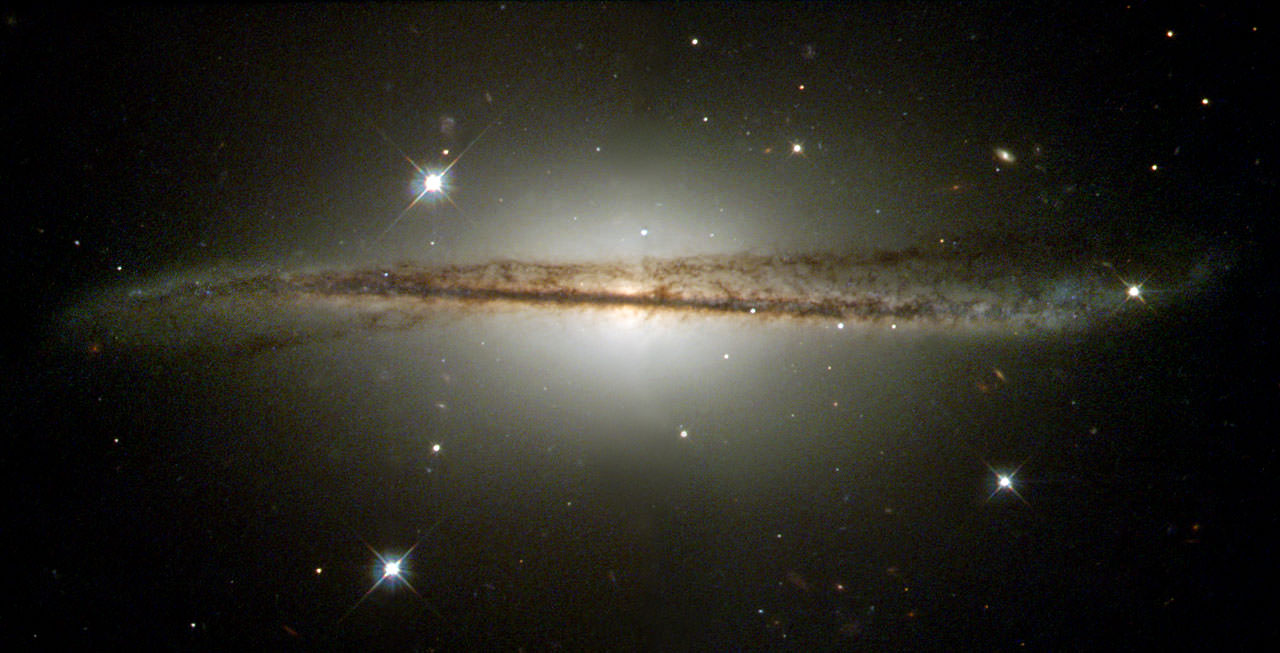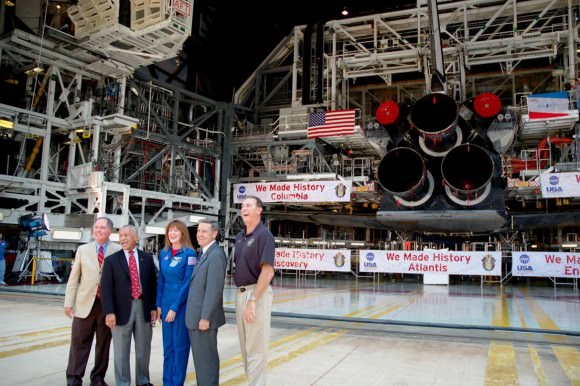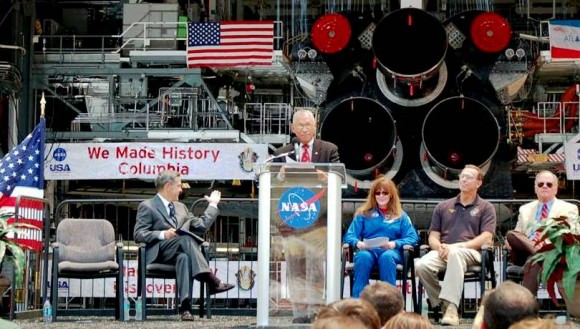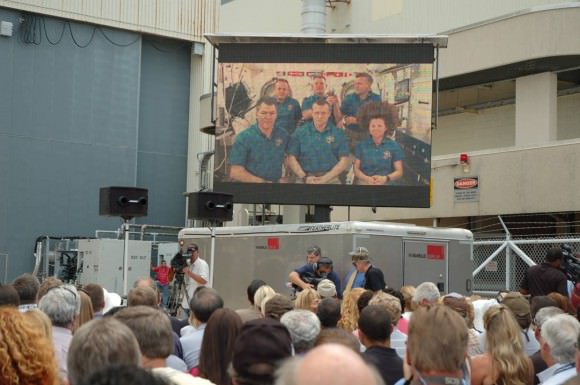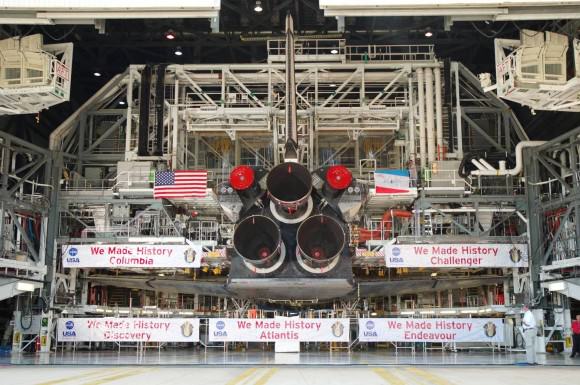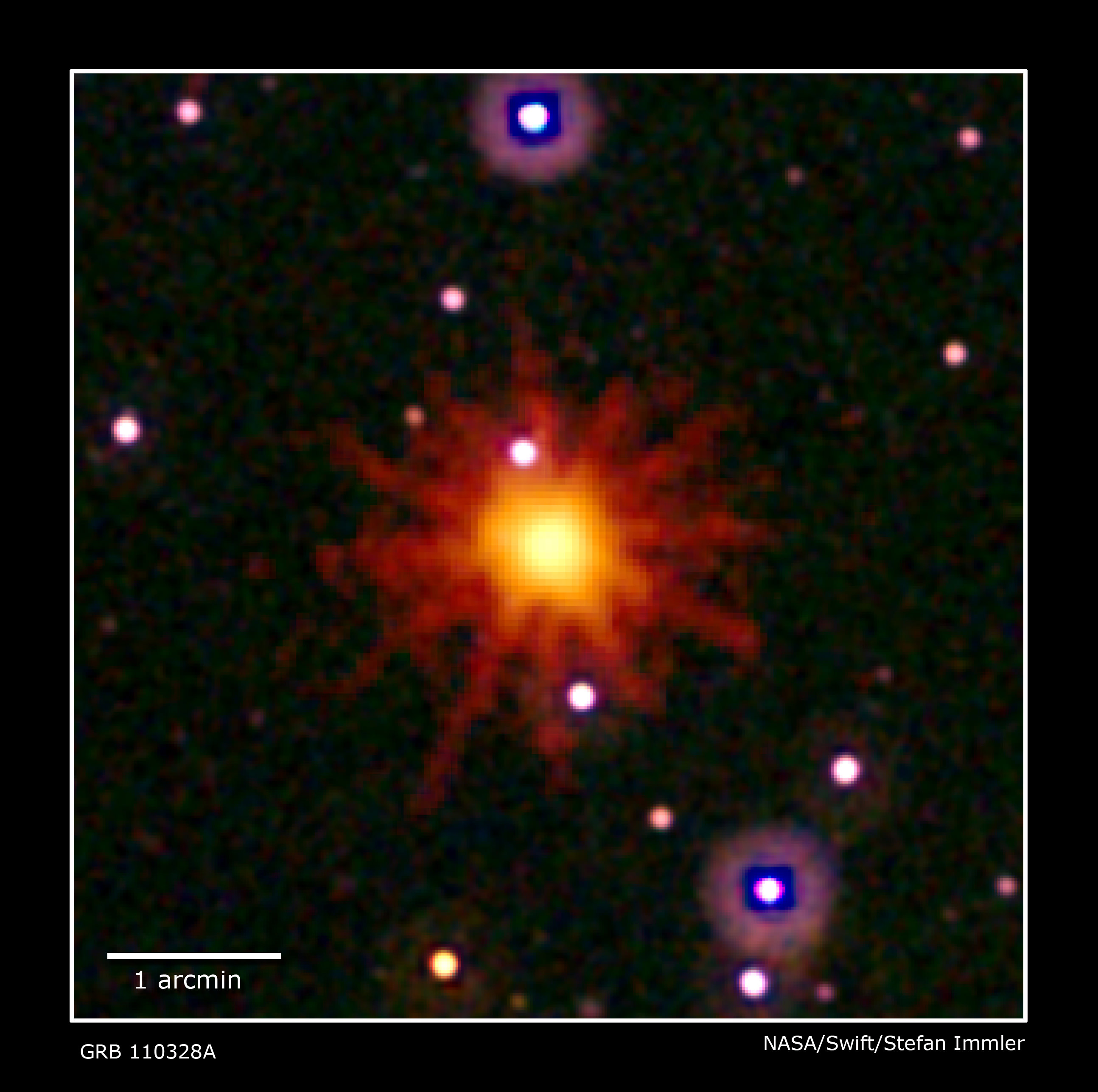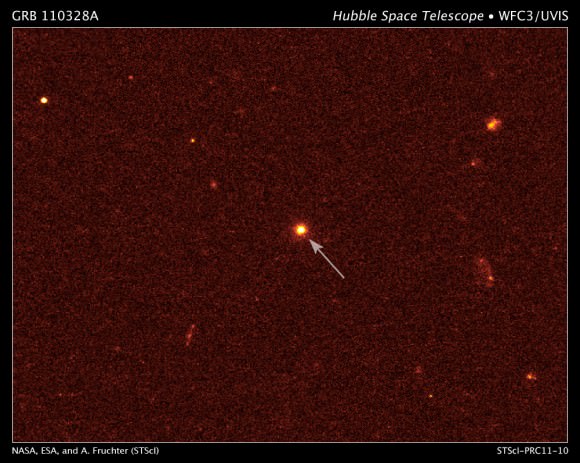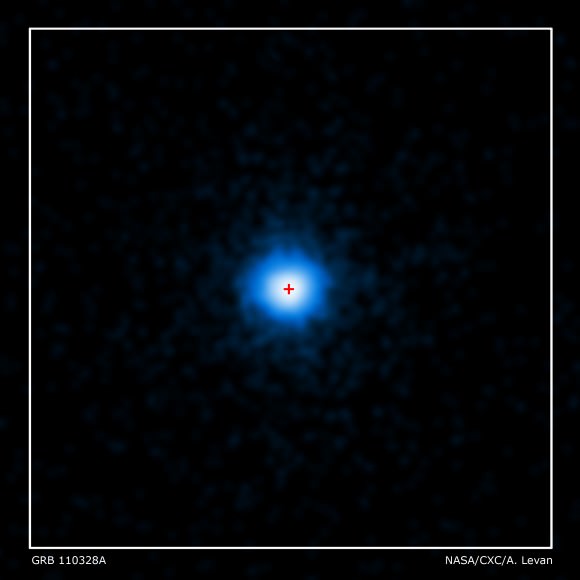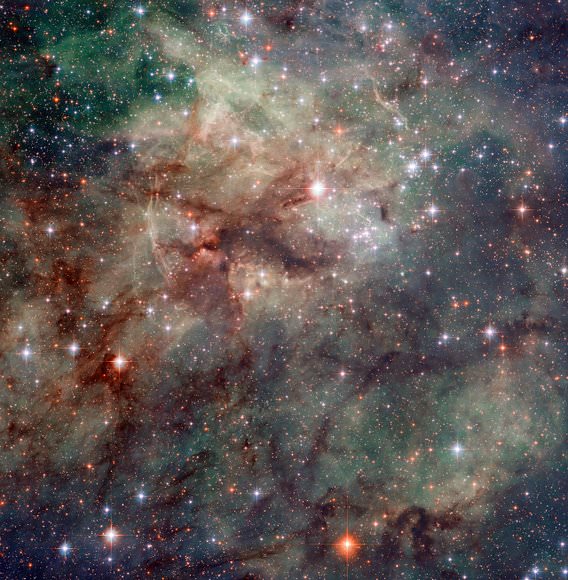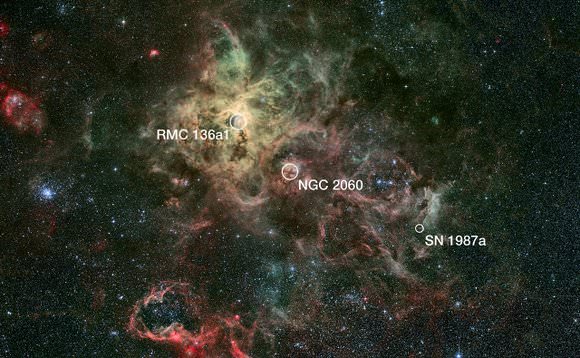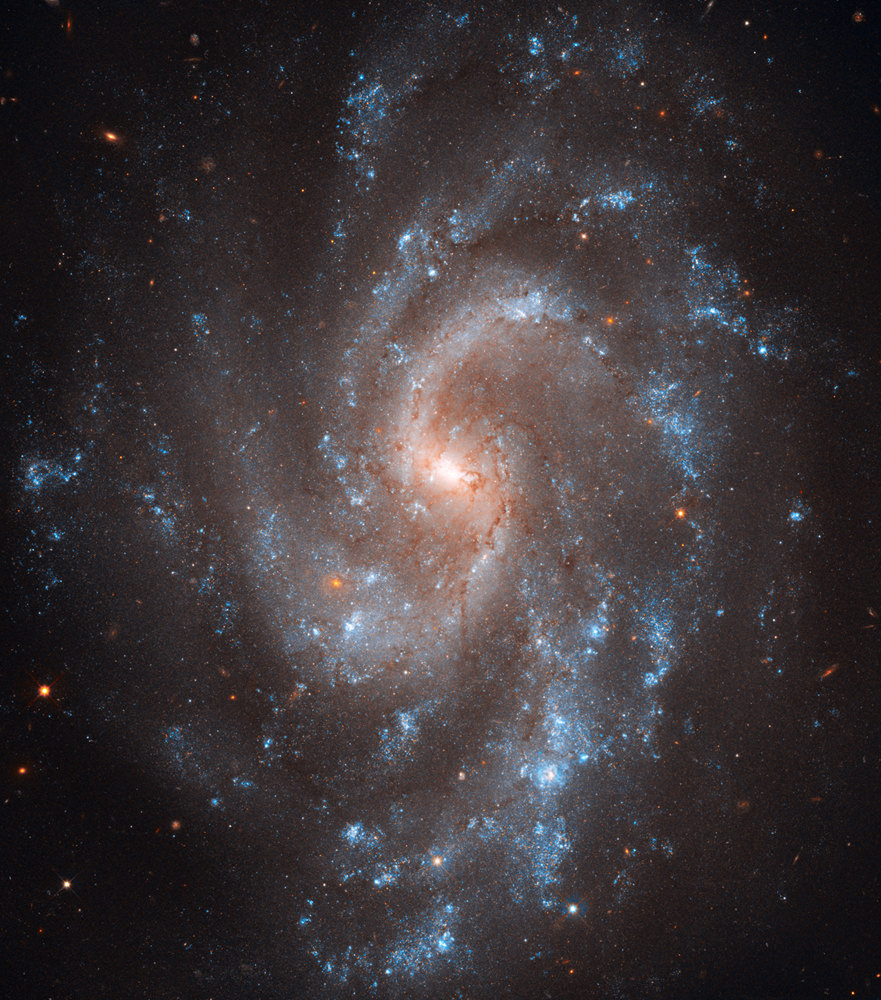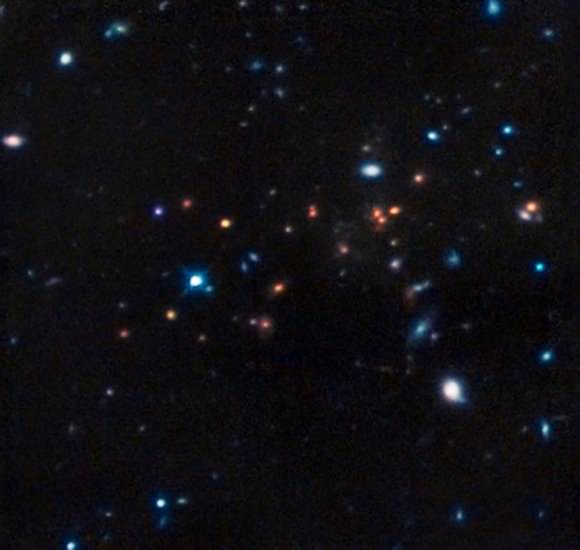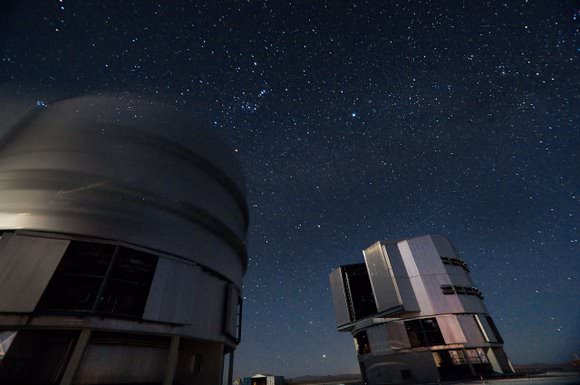[/caption]
Hubble has now turned 21, and unlike human young adults, we don’t have to worry about it staying up all night carousing at orbital drinking establishments. Instead the space telescope celebrates by doing what is has done best the past two decades, taking a marvelous image. This dramatic look at Arp 273 shows the very photogenic group of interacting galaxies that glow bright with intense star formation, perhaps triggered by a little carousing the two galaxies are doing with each other as they approach and interact.
Arp 273 lies in the constellation Andromeda and is roughly 300 million light-years away from Earth. The image shows a tenuous tidal bridge of material between the two galaxies that are actually separated by tens of thousands of light-years from each other. But still, the gravitational pull between the two is causing distortions: visible in the larger of the spiral galaxies, known as UGC 1810, is a distorted disc. The swathe of blue stars across the top is the combined light from clusters of intensely bright and hot young stars.
These massive stars glow fiercely in ultraviolet light. A series of uncommon spiral patterns in the large galaxy are a telltale sign of interaction, say the Hubble astronomers. The large, outer arm appears partially as a ring, a feature that is seen when interacting galaxies actually pass through one another, so astronomers believe the smaller companion actually dived deeply, but off-center, through UGC 1810.
The smaller, nearly edge-on companion below is known as UGC 1813. It also shows distinct signs of intense star formation at its nucleus.
The larger galaxy has a mass that is about five times that of the smaller galaxy. In unequal pairs such as this, the relatively rapid passage of a companion galaxy produces the lopsided or asymmetric structure in the main spiral. Also in such encounters, the starburst activity typically begins earlier in the minor galaxy than in the major galaxy. These effects could be due to the fact that the smaller galaxies have consumed less of the gas present in their nucleus, from which new stars are born.
The image was taken on December 17, 2010, with Hubble’s Wide Field Camera 3 (WFC3).
Happy Birthday Hubble! (and many more…)
See more information on this image at ESA’s Hubble website, or NASA’s HubbleSite

